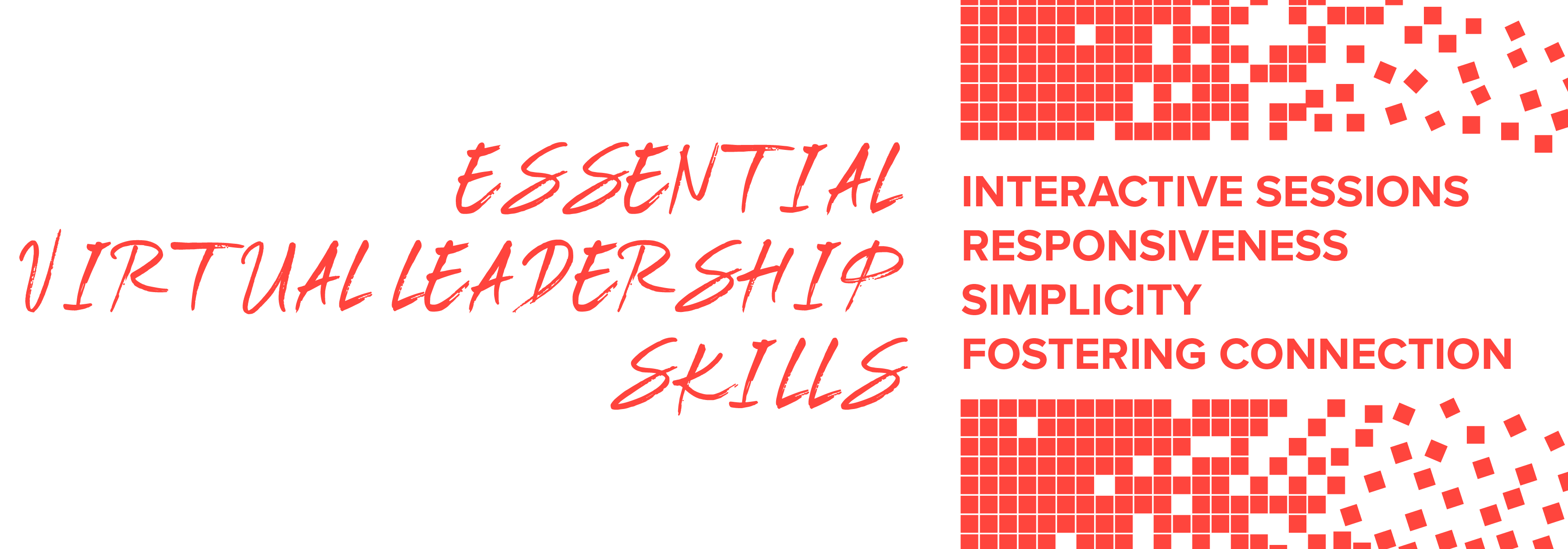Before the pandemic, “virtual leadership” may have applied to a handful of people, but was not a set of relevant skills for most. Today, however, more and more leaders are finding they must be adept in how to lead in traditional, in-person settings and in newer digital or hybrid environments. Learning virtual leadership skills will help you better connect with your team, lead those around you through change, and navigate the unknown.
Virtual Leadership in the “New Normal”
In our book, Explore or Expire, we note: “Change has always been the norm, but in recent years the rate of change has accelerated.” This is especially true now, in the wake of many geopolitical and social changes in recent years.
As changes occur more rapidly, we must adjust accordingly. We are all living in a world of a “new normal,” where events are a combination of in-person and virtual. The strategies and tactics that leaders may have used in the past may no longer be as effective.

In particular, hybrid and virtual settings pose a set of unique challenges when it comes to leadership and facilitation:
- Online events offer fewer opportunities to read body language and assess contentment or engagement. This can apply not only to events or facilitation spaces, but also to regular meetings, such as one-on-ones with direct reports.
- Generally, engagement online is thought to be lower due to the potential to turn off cameras, walk away from the computer, and otherwise prioritize other aspects of one’s environment than an online meeting.
- After years of online meetings, many people are fatigued by them, and are less engaged than they would be at an all in-person event.
- Technical difficulties remain a barrier that is not only challenging to address, but also hard to anticipate, which can often throw leaders off their groove.
- Connecting with coworkers and building relationships can be more difficult online, in part due to the lack of connection fostered by seeing people on screens, rather than in person.
But, with the right mindset and skills, these challenges are not insurmountable. Instead, every challenge becomes an opportunity. This holds true with leading hybrid teams as well. Becoming adept at leading hybrid teams is a valuable opportunity in today’s workplace.
Over half of employees expect a hybrid work environment from now on, so leaders should be working to adapt now, rather than later. Reframing the challenges of virtual leadership as opportunities is an important practice for leaders to participate in and demonstrate to their teams. Show your team what’s possible, rather than that you’ve become frustrated by the “new normal” of virtual and hybrid teams.
We’ve collected some of the skills we think will be most valuable in virtual leadership settings to get you started.
Learning Virtual Leadership Skills
Virtual leadership is often thought to be about soliciting and maintaining engagement in online settings. While this is part of the picture, it is broader than that. Virtual leadership is about online engagement, as well as inspiring and motivating team members, equipping them with the skills they need to do their jobs, ensuring goals and expected outcomes are met, and generally connecting with people.
The skills associated with virtual leadership are applicable to in-person and hybrid settings, too, giving leaders equipped with these skills an advantage across the board.

Here are some of the virtual leadership skills you may want to consider becoming adept in to meet these expectations:
- Interactive sessions are a hallmark of virtual leadership. Invite participants to provide input and feedback in unique ways, such as by using breakout rooms, a virtual poster board tool, or something similar. This provides a variety of opportunities for people to connect with the material and each other, regardless of learning style.
- Responsiveness is key to a hybrid environment. We all know no two sessions — or people — are alike. Whether there are learning needs, technical difficulties, or something else, your role as a leader is to be flexible and responsive to the needs of the individuals in the room (or online). Some ways this could happen include: providing closed captioning or other accommodations, additional guidance or feedback on virtual tools, more time to accomplish tasks, and so on.
- Simplicity can be beneficial in a virtual or hybrid setting. With so many other moving pieces, simplifying where you can, such as in your explanations and analogies, can help participants remain engaged. This can also take the form of regularly checking in to ensure understanding where relevant, or reducing the amount of flipping between applications or decks throughout a presentation.
- Fostering connection is important in any leadership setting, but particularly in hybrid or virtual ones. Strong leaders must be able to build relationships with those around them, regardless of the setting. Often, this begins with getting to know someone on a personal level. Ask genuine questions about your team member’s lives, and share details about your own life. Many people find that transparency and vulnerability can begin to build meaningful connections.
With so many virtual leadership skills to learn or brush up on, it can be daunting to begin learning. Luckily, there are ample ways to learn new skills. Attending a training (in person or online) allows you to learn from experts in their field, while practicing a new skill can help you to take new skills from theory into reality. Consider utilizing a Peer Advisory Group, which is a cohort of talented peers who can act as a sounding board or trusted audience for practicing new skills. On the other hand, if you’re looking for more direct, personalized, and professional support, consider working with a coach, mentor, or guide, depending on your needs.
Why Learn Virtual Leadership?
In the past, virtual leadership was not a priority; It was unknown. In the future, we may be discussing a new type of leadership. Effective leaders will continuously adapt to new leadership styles, but each previous skill set will remain relevant, even as mediums and platforms change.
In order to stay (or become) a strong leader in any work environment, one must be willing to imagine new possibilities and approaches, to adapt to the world around them, to implement changes, and to navigate the unknown. All of these leadership competencies overlap heavily with the principles of Exploratory Leadership.
Like Exploratory Leadership, virtual leadership requires flexibility and a willingness to traverse uncharted territory for the betterment of yourself and those around you. As we said in Explore or Expire,
“The exploratory leader is adept at realizing how things could be different…Such a visionary sees beyond the here and now, and imagines new possibilities, new options, and new approaches.”
Improve Your Virtual Leadership Skills
With the skills of Exploratory Leadership, you will become more adept not only at imagining new possibilities, but also in skills and strategies you can use to improve your virtual leadership skills. In Studio/E’s Expedition Program, you will learn the principles of Exploratory Leadership in a cohort of peers with the support of an experienced Guide. Join the Expedition Program to improve your leadership skills, online and off.



SUBMIT YOUR COMMENT